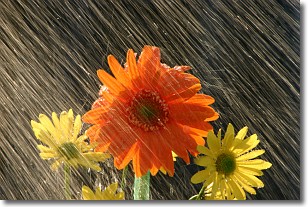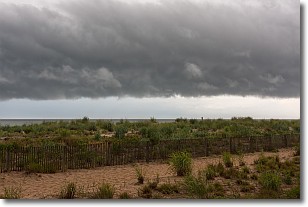Weather Alert in Nebraska
Flood Warning issued June 26 at 8:57PM CDT until June 27 at 10:00AM CDT by NWS Hastings NE
AREAS AFFECTED: Adams, NE; Buffalo, NE; Hall, NE; Howard, NE; Kearney, NE; Merrick, NE; Sherman, NE
DESCRIPTION: * WHAT...Flooding caused by earlier excessive rainfall continues. * WHERE...Portions of central and south central Nebraska, including the following counties, in central Nebraska, Howard, Merrick and Sherman. In south central Nebraska, Adams, Buffalo, Hall and Kearney. * WHEN...Until 1000 AM CDT Friday. * IMPACTS...Continued flooding of rivers, creeks, streams, and other low-lying and flood-prone locations is imminent or occurring. It will take several more hours for all the floodwater to work through local drainage systems, especially in urban areas. * ADDITIONAL DETAILS... - At 840 PM CDT, Emergency management reported continued, mainly minor flooding of some small creeks/streams and mainly rural county roads within various parts of the warned area, resulting from the generally 4 to 8 inches of rain that fell Wednesday into Thursday morning. Although water levels have started to stabilize or even recede in some places, at least minor flooding and areas of standing water in low-lying and poor drainage areas will surely continue into the day Friday. As just one example of continued flooding, a gauge along the Turkey Creek northwest of Dannebrog reported a stage of 19.1 feet as of 745 PM Thursday, still a few feet above the minor flood stage of 17 feet. - This Warning includes the following streams and drainages... Prairie Creek, Lincoln Creek, Oak Creek, Warm Slough, Beaver Creek, Moores Creek, Dry Creek, Cherry Creek, Sand Creek, Cottonwood Creek, Turkey Creek, Deer Creek and Thirtytwo Mile Creek. - Some locations that could experience flooding include... Grand Island, St. Paul, Gibbon, Wood River, Shelton, Kenesaw, Doniphan, Cairo, Juniata, Alda, Dannebrog, Holstein, Howard City, Heartwell, Prosser, Norman, Boelus and St. Libory. - http://www.weather.gov/safety/flood
INSTRUCTION: Turn around, don't drown when encountering flooded roads. Most flood deaths occur in vehicles.
Want more detail? Get the Complete 7 Day and Night Detailed Forecast!
Current U.S. National Radar--Current
The Current National Weather Radar is shown below with a UTC Time (subtract 5 hours from UTC to get Eastern Time).

National Weather Forecast--Current
The Current National Weather Forecast and National Weather Map are shown below.

National Weather Forecast for Tomorrow
Tomorrow National Weather Forecast and Tomorrow National Weather Map are show below.

North America Water Vapor (Moisture)
This map shows recent moisture content over North America. Bright and colored areas show high moisture (ie, clouds); brown indicates very little moisture present; black indicates no moisture.

Weather Topic: What is Precipitation?
Home - Education - Precipitation - Precipitation
 Next Topic: Rain
Next Topic: Rain
Precipitation can refer to many different forms of water that
may fall from clouds. Precipitation occurs after a cloud has become saturated to
the point where its water particles are more dense than the air below the cloud.
In most cases, precipitation will reach the ground, but it is not uncommon for
precipitation to evaporate before it reaches the earth's surface.
When precipitation evaporates before it contacts the ground it is called Virga.
Graupel, hail, sleet, rain, drizzle, and snow are forms of precipitation, but fog
and mist are not considered precipitation because the water vapor which
constitutes them isn't dense enough to fall to the ground.
Next Topic: Rain
Weather Topic: What are Shelf Clouds?
Home - Education - Cloud Types - Shelf Clouds
 Next Topic: Sleet
Next Topic: Sleet
A shelf cloud is similar to a wall cloud, but forms at the front
of a storm cloud, instead of at the rear, where wall clouds form.
A shelf cloud is caused by a series of events set into motion by the advancing
storm; first, cool air settles along the ground where precipitation has just fallen.
As the cool air is brought in, the warmer air is displaced, and rises above it,
because it is less dense. When the warmer air reaches the bottom of the storm cloud,
it begins to cool again, and the resulting condensation is a visible shelf cloud.
Next Topic: Sleet
Current conditions powered by WeatherAPI.com




